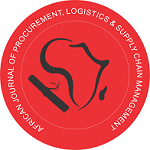Brian K Chikwava
PhD Researcher in Australia.
Email: chikwavabk@yahoo.com | bkchikwava@gmail.com
1.0 INTRODUCTION
“We have never seen a disruption like this where many countries are telling their populations to stay at home, not to work.” Uncertainties that lay ahead swing between extremes; In some parts of the world lengthy stretch of virtually vacant shelves and unusual insufficient supply of essentials, job losses are simply the observable influences on the worldwide supply chain disruptions orchestrated through the COVID 19- virus. In other parts of the world, unnoticed are the manufacturing stoppages in all underdeveloped, developed and developing nations and the insufficient raw materials, subassemblies and final goods that form the back tale of the influences.
The corona Virus illness 2019 (COVID 19) eruption is in its totality incomparable scale and harmful for individuals and supply chains. It is a natural disaster. The COVID-19 eruption is among the dangerous epidemics in current years and, consequently, is the biggest fear to the overall financial system. The predicament is not a thing that is the consequences by a deed of regulation or policies or financial factors. To add its severity and complexity nature of this disaster Covid-19, is the fact that the size and duration of the impact is not clear. Covid-19 has many unknowns.
Apart from causing Supply chain disruptions other negative impacts of Covid19 in the supply chain include demand Volatility, bullwhip effects and capacity issues and simultaneously affect both Demand and Supply-side. However, as everyone is swimming amid confusion and uncertainties during the ongoing pandemonium -other forward-thinking agile and flexible specialists are thinking ahead (Bartik, Bertrand, Cullen, Glaeser, Luca& Stanton, 2019). It is evident risk management procedures are proving to be not vigorous sufficient to deal with the outburst of this unpredictable virus.
As such firms cannot fold arms, sit back, and relax during this time. It is the right and appropriate time to sharpen their risk mitigation tools, revisit strategies and embark on building from what could have been done before the pandemic and re-design their supply chain. I can testify that majority of the big companies were formed during the recession period or the crisis period (Donthu& Gustafsson, 2020). It is the right time to start thinking about how to STOP fighting new wars with old strategies. Instead, we need new approaches and new strategies to fight new wars.
Small to medium enterprises (SMEs) are the hardest hit during this unprecedented crisis of the novel coronavirus (COVID 19) epidemic and from what I have researched, majority of outsider’s lack understanding of the complex & nuanced challenges faced by SMEs on dealing with supply chain disruptions particularly from natural disasters (Bartik, Bertrand, Cullen, Glaeser, Luca& Stanton, 2019).
SMEs which comprise about 90% across the globe and more than 50% of the world’s total employment are both extremely exposed to the disruption and therefore critical to the recovery. They are very important and so significant they need to be protected and well promoted and kept abreast about certain practical information. This publication seeks to propose some potential mitigating strategies to reduce or eliminate the negative impacts of this pandemic from the firm’s perspective (Barrero, Bloom& Davis, 2020).
Keywords: Supply Chain Disruption, Devastating Effects of Covid19

